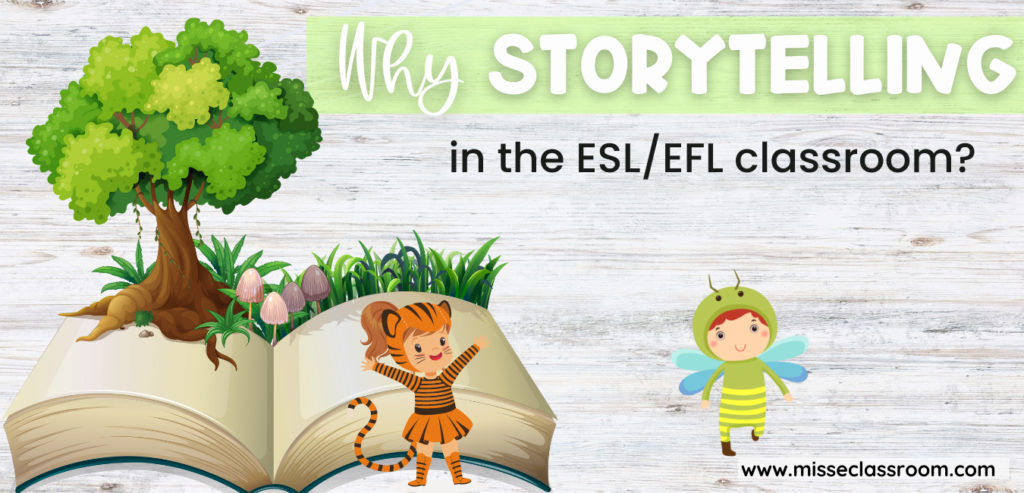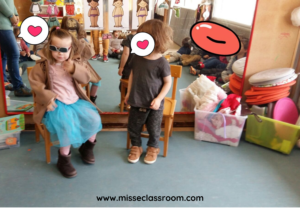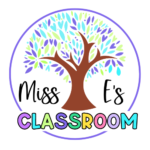The art of storytelling goes way back to prehistory since in its core, it’s the way of narrating a tale from memory, it’s like giving life to a book or story. Also, it’s a way to get back to our own origins as human beings and it is in our DNA.
Storytelling has multiple benefits including fostering emotional intelligence and helping children gain insight into human behavior, the sociocultural environment where myth and history take place but also, and more importantly for us English language teachers, it promotes language learning by enriching learners’ vocabulary and acquiring new or more complex language structures.
On top of the ice cream, it’s a valuable tool to provide a motivational and low-anxiety context for language learning. In this post, you will be absolutely sure you will use storytelling with your ELLs.

Storytelling is a living art. Like music and dance, it is brought to life in a performance. The storyteller works with words, sounds and language patterns, his/her tools will be the voice, face and hands. The product is the creation of a share human experience. The most important benefits of storytelling are:
- Stories are motivating and fun and can help develop positive attitudes towards the foreign language and the language learning. They can create a desire to continue learning.
- It exercises the imagination. Children can become personally involved in a story as they identify with the characters and try to interpret the narrative and illustrations. This imaginative experience helps develop their own creative powers.
- Storytelling in a class is a shared social experience. Reading and writing are often individual activities; storytelling provokes a shared response of laughter, sadness, excitement and anticipation which is not only enjoyable but can help build up child’s confidence and encourage social and emotional development.
- Children enjoy telling/listening to stories over and over again. This frequent repetition allows certain language items to be acquired while others are being overly reinforced. Many stories also contain natural repetition of key vocabulary and structured. This helps children to remember every detail, so they can gradually learn to anticipate what is about to happen next in the story.

All in all, storytelling can be a unvaluable tool in the English language classroom and you won´t find a better motivator! It gives children an eager experience and a strong sense of achievement at having worked with a real book specially on young learners.
If you want to know how to choose the appropriate stories for a storytelling adventure, stay tuned for the 2nd part!


